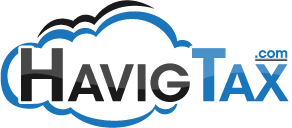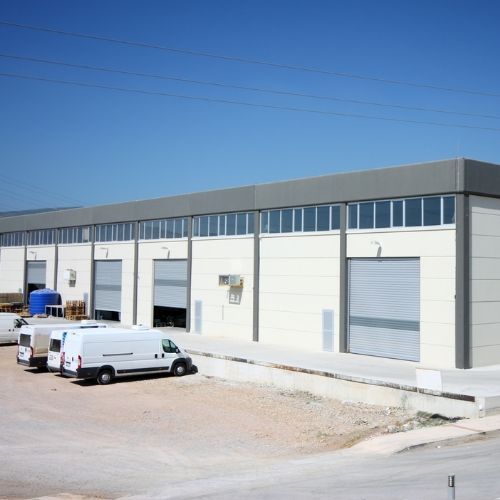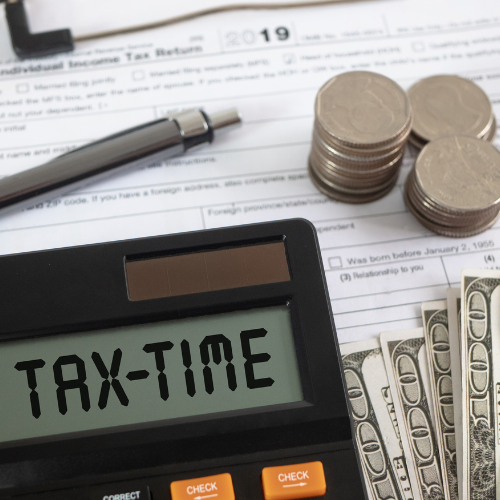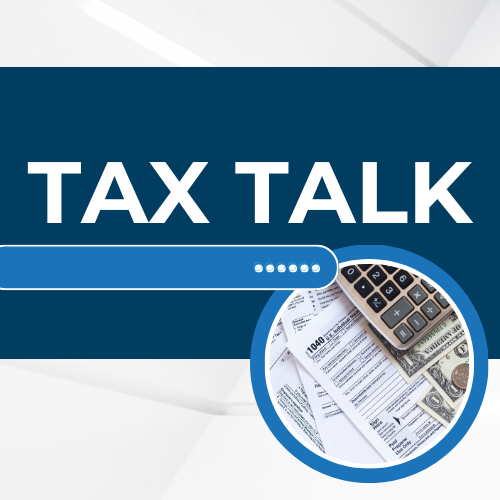September 2024 Newsletter
September 2024 Newsletter
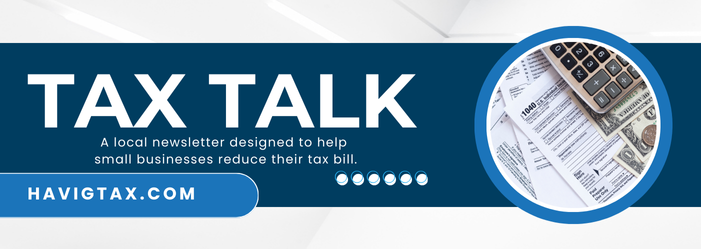
Tax Deduction for School Teachers
We usually keep this newsletter focused on topics that are relevant to small businesses, self-employed taxpayers, and entrepreneurs. However, with September being the start of the school year for so many kids, we wanted to highlight a little-known tax benefit for teachers and educators!
Educators play a crucial role in shaping the future, often going above and beyond by spending their own money on classroom supplies and resources. Fortunately, the IRS recognizes this dedication and offers a special tax deduction for qualified educators.
What Is the Educator Expense Deduction?
The Educator Expense Deduction allows teachers and other eligible educators to deduct unreimbursed expenses for classroom supplies, professional development, and other related costs. This deduction is available even if you don’t itemize your deductions, making it an accessible tax break for many. In 2024, teachers and eligible educators can deduct up to $300 in out-of-pocket expenses directly from their taxable income. Here’s what you need to know about this valuable deduction.
Who Qualifies for the Deduction?
You may be eligible for the Educator Expense Deduction if you meet the following criteria:
- Employment: You’re a teacher, instructor, counselor, principal, or aide for kindergarten through 12th grade.
- Work Hours: You work at least 900 hours a year in a school that provides elementary or secondary education.
- Filing Status: The deduction is available to individual filers, and if both spouses are eligible educators and file jointly, each can claim up to $300, totaling $600 per couple.
What Expenses Are Eligible?
Qualified expenses that can be deducted include:
- Classroom Supplies: Pens, paper, notebooks, books, software, and other instructional materials.
- Professional Development: Costs for continuing education courses, workshops, and certifications directly related to your teaching responsibilities.
- Health and Safety Equipment: Items purchased for the classroom to maintain a safe and healthy learning environment, such as disinfectants, masks, and air purifiers.
To claim the deduction, the expenses must be ordinary (common in your line of work) and necessary (appropriate and helpful for your job).
How to Claim the Deduction
Claiming the Educator Expense Deduction is straightforward:
- Keep Receipts: Maintain detailed records and receipts of all out-of-pocket expenses related to your classroom and professional development.
- File Form 1040: On your 2024 tax return, you can claim the deduction directly on Form 1040, Line 11 (as of the 2023 form). You do not need to itemize your deductions to claim this benefit.
- Consider Other Tax Benefits: If you have additional work-related expenses that exceed $300, consider whether any of those can be deducted under other tax provisions, especially if you itemize.
Why This Deduction Matters
Teaching is a profession that often requires personal financial contributions to create a thriving educational environment. The Educator Expense Deduction is a small but meaningful way to offset these costs. While $300 might not cover all the expenses teachers incur, it provides some relief and acknowledges the vital role educators play.
If you or an educator in your life needs more information on how to claim this deduction (or other tax-saving strategies) feel free to reach out to our office. Thank you for your continued dedication to education!
What are the Differences Between C Corporations and S Corporations?
Choosing the right business structure is a crucial decision for small business owners, with significant implications for taxes, liability, and growth potential. Two common options are filing as a C Corporation (C Corp) or an S Corporation (S Corp). Both have distinct tax advantages and disadvantages that can impact your business's bottom line. Here’s a breakdown to help you understand the key tax differences between these two structures.
Taxation Structure
One of the primary differences between C Corporations and S Corporations is how they are taxed:
C Corporation (C Corp):
Double Taxation: C Corps are subject to what’s known as double taxation. The corporation itself pays corporate income taxes on its profits at the federal rate (currently 21%). When profits are distributed to shareholders as dividends, those dividends are taxed again on the individual shareholder’s tax return.
Corporate Tax Rate: The flat corporate tax rate for C Corps is currently 21%, which can be advantageous for businesses with high profits that want to reinvest earnings back into the business.
S Corporation (S Corp):
Pass-Through Taxation: S Corps avoid double taxation. Instead of the corporation paying taxes, profits (and losses) are passed through to shareholders and reported on their personal tax returns. The income is then taxed at the individual’s tax rate, which can range from 10% to 37% depending on their income bracket.
No Corporate Taxes: S Corps do not pay federal income tax at the corporate level, making it a more tax-efficient structure for small businesses.
Dividends and Distributions
The way profits are distributed and taxed also varies:
C Corporation:
Dividends: Profits distributed as dividends to shareholders are taxed at the capital gains tax rate, which can be 0%, 15%, or 20%, depending on the shareholder’s income level. These dividends do not reduce the corporation’s taxable income.
Retention of Earnings: C Corps can retain earnings within the company to avoid immediate taxation at the shareholder level, allowing for potential reinvestment into the business.
S Corporation:
Distributions: Shareholders of S Corps receive distributions instead of dividends. These distributions are generally not subject to self-employment taxes, which can be a significant tax advantage.
Pro Rata Distributions: Distributions must be made on a pro-rata basis to shareholders, meaning all shareholders must receive distributions in proportion to their ownership percentage.
Self-Employment Taxes
Self-employment taxes (Social Security and Medicare) are another critical consideration:
C Corporation:
Salaries Subject to Payroll Taxes: Shareholder-employees of a C Corp pay self-employment taxes only on their wages or salaries, not on dividends received. The corporation is also responsible for paying its share of payroll taxes.
S Corporation:
Reasonable Compensation: Shareholder-employees must be paid a reasonable salary, which is subject to self-employment taxes. However, distributions (the portion of profits beyond the salary) are not subject to self-employment taxes, potentially reducing the overall tax burden.
Qualified Business Income (QBI) Deduction
The Tax Cuts and Jobs Act introduced the QBI deduction, which can affect your choice between a C Corp and an S Corp:
C Corporation:
Ineligible for QBI Deduction: C Corps do not qualify for the QBI deduction, which allows eligible businesses to deduct up to 20% of their qualified business income.
S Corporation:
Eligible for QBI Deduction: S Corps can take advantage of the QBI deduction, reducing the effective tax rate on the business income passed through to shareholders.
Tax Compliance and Administrative Complexity
Both C Corps and S Corps have unique tax filing requirements:
C Corporation:
Form 1120: C Corps must file Form 1120, the U.S. Corporation Income Tax Return. The corporation may also be subject to various state and local taxes.
Administrative Requirements: C Corps have more stringent administrative requirements, including maintaining detailed corporate records, holding regular board meetings, and keeping minutes.
S Corporation:
Form 1120S: S Corps file Form 1120S, the U.S. Income Tax Return for an S Corporation, and issue Schedule K-1 to shareholders, outlining their share of income, deductions, and credits.
Strict Eligibility Criteria: S Corps have strict eligibility criteria, including a limit of 100 shareholders, all of whom must be U.S. citizens or residents.
Choosing between a C Corporation and an S Corporation requires careful consideration of your business’s current and future needs. C Corps may be more suitable for businesses looking to reinvest profits and potentially seek public investment. In contrast, S Corps offer tax advantages that can benefit small businesses looking to minimize double taxation and self-employment taxes.
Consulting with a tax professional can help you determine the best structure for your business, ensuring that you take full advantage of the tax benefits available while complying with all legal requirements. Making an informed choice can significantly impact your business’s financial health and long-term success.
Tax Relief for Severe Storm Victims in Minnesota
The IRS and Minnesota Department of Revenue have both recently announced that they are providing relief to taxpayers in Minnesota counties that have been affected by severe storms and flooding this year. These taxpayers now have additional time to file and pay certain taxes and tax returns.
The counties that qualify for relief differ for the IRS and MN Dept. of Revenue, so be sure to consult with your tax professional and the details of each program carefully. Here are the links to each of the program's websites that have more details about each program:
Internal Revenue Service Provides Relief to Minnesota Victims of Severe Storms
Minnesota Dept. of Revenue Provides Relief to Minnesota Victims of Severe Storms
And to all the victims of the storms, we wish you luck on cleaning up and rebuilding!
Quick Links
Contact Information
Business Hours
- Mon - Fri
- -
- Sat - Sun
- Closed
